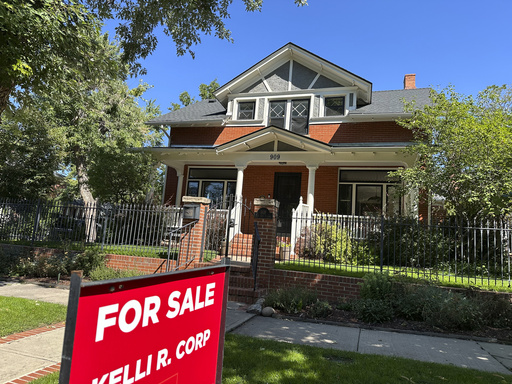The average interest rate for a 30-year mortgage in the United States has decreased for the fifth consecutive week, reaching its lowest level since late December. This decline comes at a key time when many potential homebuyers are looking to make their purchases. The current average rate is 6.85%, a slight drop from last week’s 6.87%, according to Freddie Mac’s latest report. In the same timeframe last year, the average stood at 6.9%.
In addition, rates for 15-year fixed-rate mortgages, which are often favored by those looking to refinance, have also decreased. This week, the average for these loans has fallen to 6.04%, down from 6.09% the previous week. Last year’s average was slightly higher at 6.29%.
Despite this reduction in borrowing costs, the persistent rise in home prices combined with higher mortgage rates continues to deter many potential buyers, particularly first-time homebuyers who lack the equity to assist in purchasing a new home. Last year, the volume of sales for previously owned homes in the U.S. reached its lowest point in nearly three decades, contributing to a prolonged slump in the housing market that has been ongoing since 2022 due to increasing mortgage rates following their record lows during the pandemic.
Currently, the average rate for a 30-year mortgage matches the level it was on December 26, when it also sat at 6.85%. It briefly reached a two-year low last September, but has mostly remained close to the 7% mark throughout this year.
Sam Khater, the chief economist at Freddie Mac, noted that this consistency in mortgage rates is promising for both buyers and sellers as the busy spring buying season approaches.
Recent data from Redfin indicates that the number of homes available on the market has risen to its highest point since June 2020. However, the combination of mortgage rates and home prices remains unaffordable for many potential buyers, limiting their ability to enter the market.
Even with lower mortgage rates, home loan applications dropped by 5.5% last week, marking the least activity seen since the start of the year, according to the Mortgage Bankers Association. Bob Broeksmit, CEO of the MBA, stated that while purchase interest is higher compared to last year, many potential buyers prefer to wait for a significant improvement in both housing availability and affordability before making a move.
Mortgage rates fluctuate based on various factors, prominently the reactions in the bond market in relation to the Federal Reserve’s decisions on interest rates. The recent decrease in mortgage rates is in line with a fall in the 10-year Treasury yield, which typically guides lenders in setting home loan prices. This yield was as high as 4.79% not long ago, influenced by concerns that inflation might persist amid a robust U.S. economy and possible ramifications of tariffs and policies suggested during the Trump administration.
As of Thursday afternoon, the 10-year yield has dropped to approximately 4.5%, following a report indicating that more American workers filed for unemployment benefits last week than were anticipated by economists.




